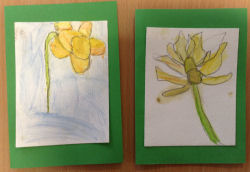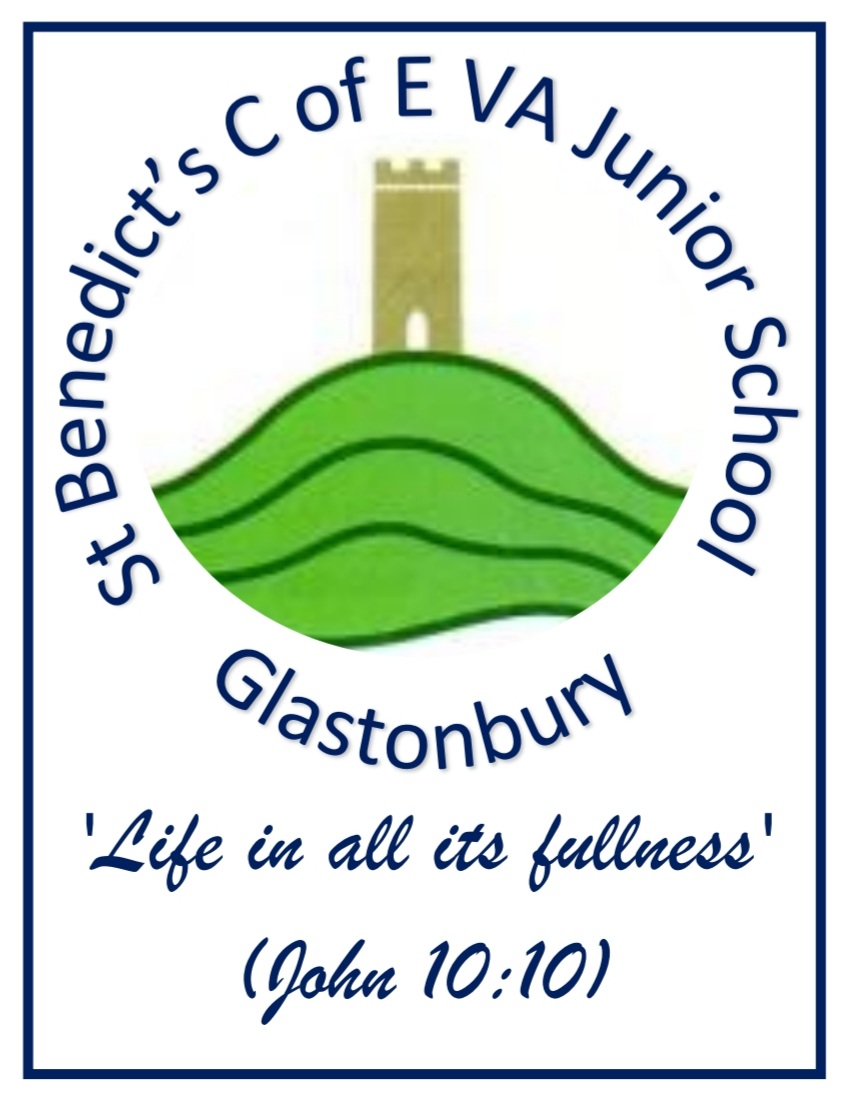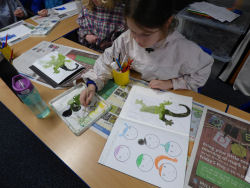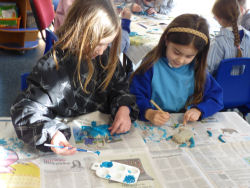Art

Art at St Benedict's C of E VA Junior School
Intent
At St Benedict’s, we recognise the essential role of Art and Design in real life and consider it a central part of every child’s experience of a broad and balanced curriculum - 'Life in all its Fullness' (John 10:10). Art and Design enables children of all abilities to communicate what they see, feel and think through visual, tactile and sensory experiences and a different of understanding and responding to the world. We recognise that it stimulates children’s creativity and imagination and that it supports their personal development and sense of wellbeing. It is our intent that all children have opportunities to explore and enjoy being creative and successful in expressing themselves through Art and design.
Our creative curriculum aims to fulfil the requirements of the National Curriculum through fostering a love and appreciation of the visual arts. While ensuring the progressive development of knowledge and skills, we enable our children to explore their sense of self, their place in their own community and wider cultures by engaging them in exciting lessons and opportunities. Creativity has been fundamental in the development of humankind and our cross-curricular approach ensures that children grow up with a critical awareness of the roles and purposes of art and design in different times and cultures and an appreciation of the value of creativity and beauty to all.
We aim to involve the whole school community with art by encouraging staff and pupils to take part in whole school projects, enhancing our school environment and celebrating our art in display and exhibitions.
Implementation
The art and design curriculum at St Benedict’s Junior School is based upon the 2014 Primary National Curriculum in England, which provides a broad framework and outlines the knowledge and skills and taught in each Key Stage. Building on their learning experiences from Key Stage 1, children are enabled to:
• produce creative work, exploring their ideas and recording their experiences
• become proficient in drawing, painting, sculpture and other art, craft and design techniques
• evaluate and analyse creative works using the language of art, craft and design
• know about great artists, craft makers and designers, and understand the historical and cultural development of their art forms.
Art and design is delivered both through the wider curriculum, as part of topics, themes and as focused skills based teaching that builds throughout the KS2 journey. Children embark on a creative journey through the use of personal sketchbooks where they explore the work of artists and crafters, experiment and practise skills and plan and evaluate their own work. They are taught to develop the confidence to express their ideas and to take creative risks. Teachers are encouraged to balance their focus on the journey as well as the outcome. Teachers plan lessons for their class using a range of resources including the Access Art (https://www.accessart.org.uk/primary_art_curriculum_planning/)and our progression of knowledge and skills documents. Access Art is the leading provider of artist-led and artist-inspired teaching and learning resources and is linked to an Exemplar Primary Art Curriculum that may inspire be implemented by teachers as part of their Art and design planning. The school progression document ensures the curriculum is covered and the skills/knowledge taught is progressive from year group to year group.
Educational visits are another opportunity for the teachers to plan for additional art and design learning outside the classroom. At St Benedict’s, the children have many opportunities to experience art and design on educational visits to museums and galleries. Glastonbury is a creative community and local artists are often invited to take part in school projects; to enhance the school environment; to share art and design learning and have hands on experiences. Children frequently engage with natural art inspired by the outdoor environment as part of forest School and opportunities to take art outside. The school is keen to celebrate gifted and talented pupils and provide enrichment opportunities for them as they arise. Extra-curricular clubs are provided for children who wish to further their experience of art and design.
The school is a member of InspireED and works with Spaeda. We access enrichment and training opportunities provided by these organisations. We regularly take part in competitions and the Take One Project with Somerset Museum providing opportunity for children to exhibit their work in the wider community. The whole school is working towards the Arts Award Discovery Award level.
We recognise the role that art can have to enable children to deal with troubling and traumatic experiences, and we use Art Therapy to support individual children to express their feelings and understand how to move forward. Art is used more widely in the school to reduce stress through mindfulness.
Impact
Within art and design, we strive to create a supportive and collaborative ethos for learning by providing interest led learning opportunities, fostering children’s curiosity and excitement. Children are encouraged to take creative risk and to develop a range of skills with different materials and media along their journey through key Stage 2. At the end of their time at St Benedict’s they will have confidence in expressing themselves creatively, a body of skills that enable them to do this and the language to talk about it, preparing them for the next step in their art and design education and transition to secondary school.
In assessing the impact of Art and Design, we focus on children’s confidence as creative artists as well as the progression of knowledge and skills. Impact is assessed by evaluating children’s progress through discussion with individuals and as a class, responses in evaluations in sketchbooks and their creative journey and outcomes. We use topic floor books to record children’s work and experience and employ the use of student voice to add comments and opinions. Children self-evaluate their work both verbally and in their sketchbooks; exploring what they have achieved and where they need to develop. Children also peer evaluate each other’s work and increasingly develop the language of analytical, constructive responses.
We also measure the impact of our curriculum through staff and pupil surveys, Book-looks of sketchbooks and artwork and subsequent moderation in staff meetings where pupil’s books are scrutinised and there is the opportunity for a dialogue between teachers to understand their class’s work and monitor progression.


